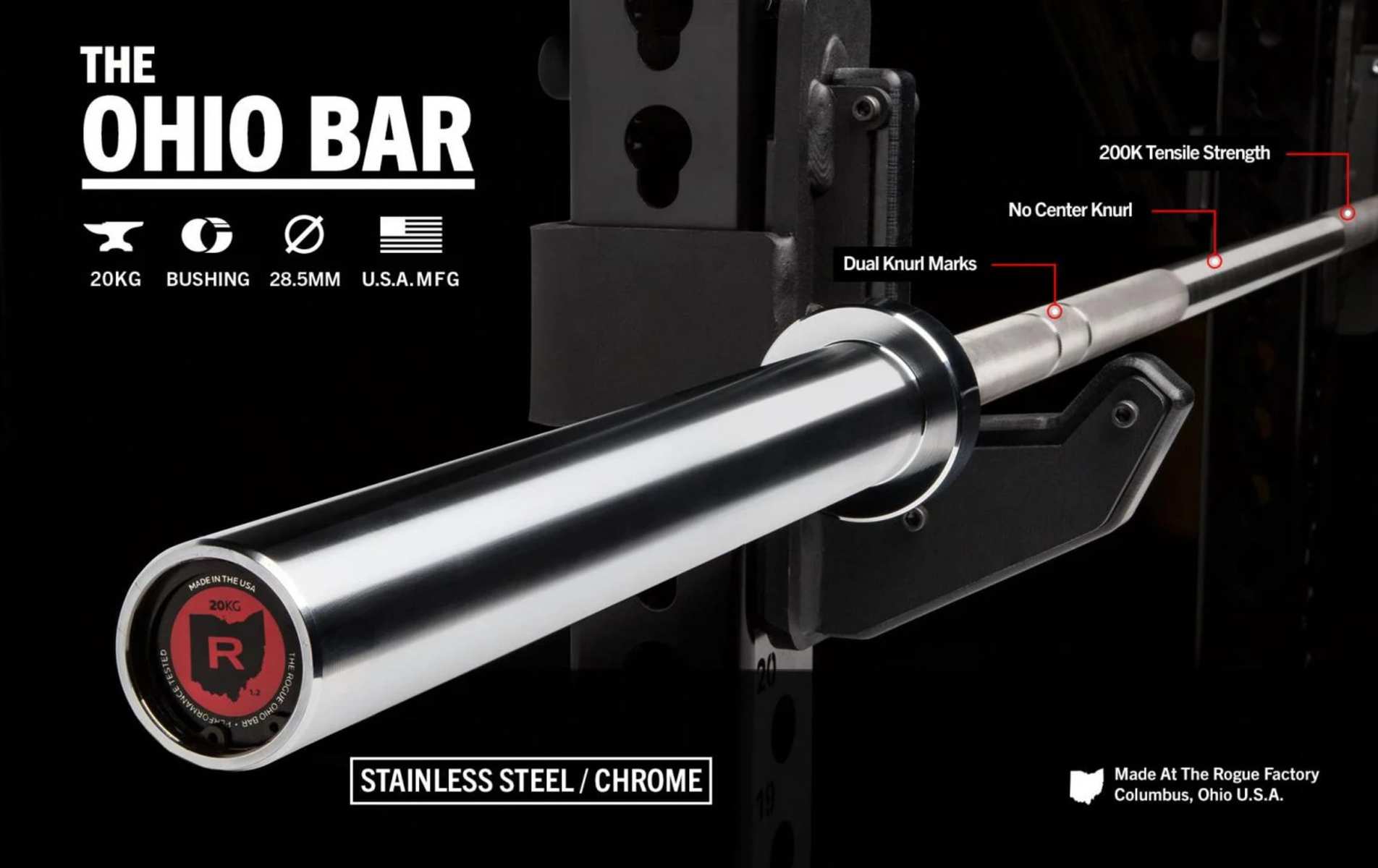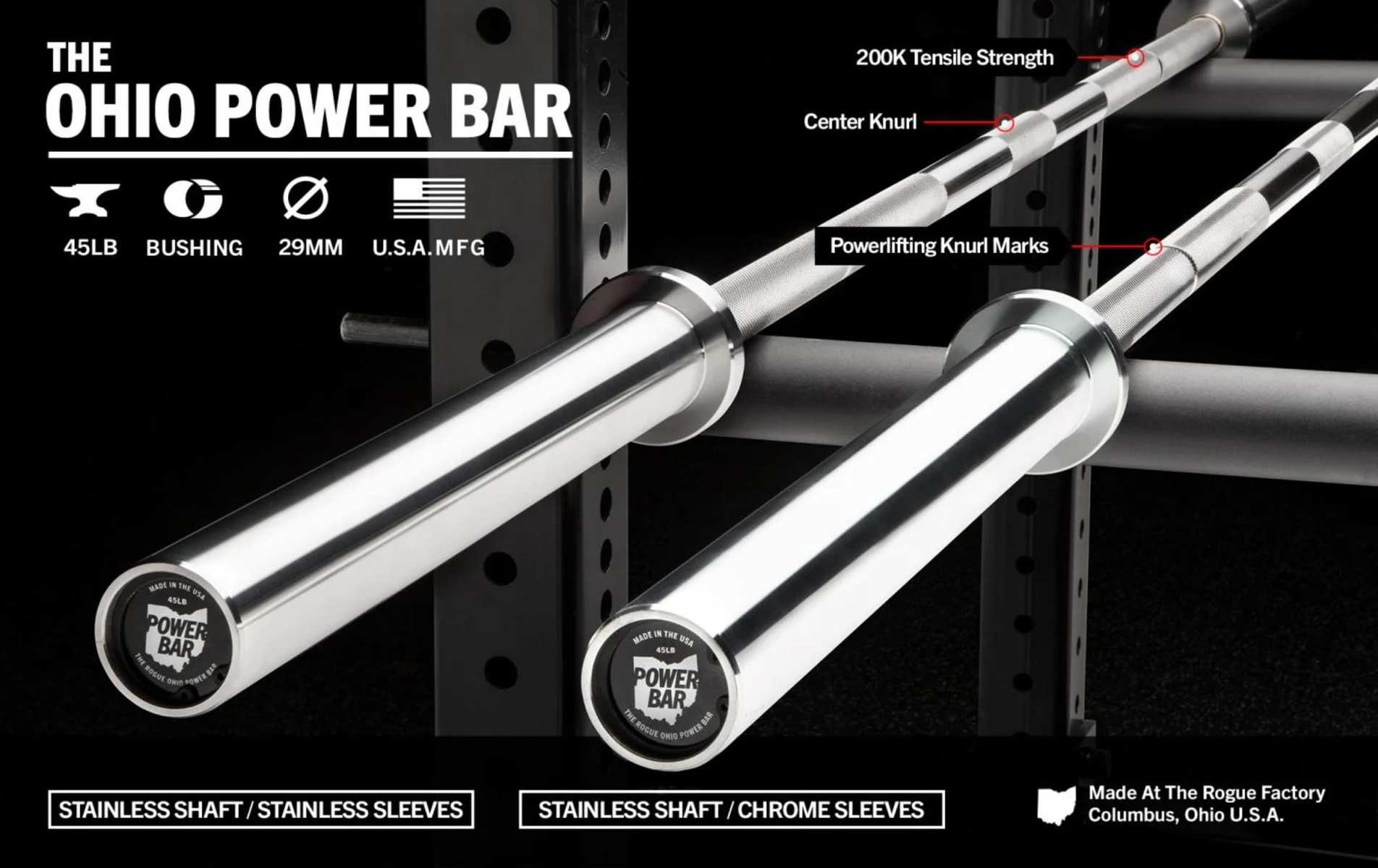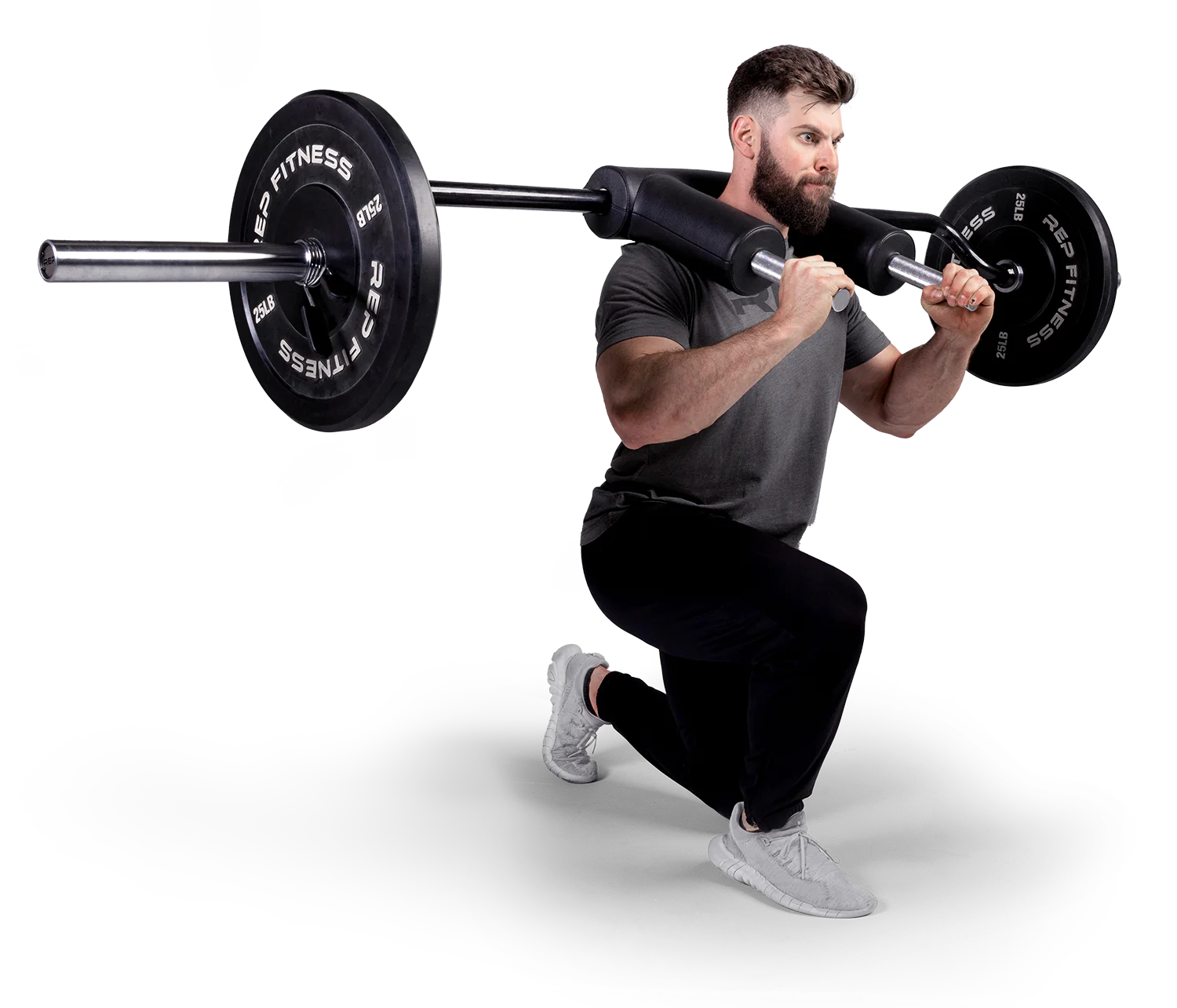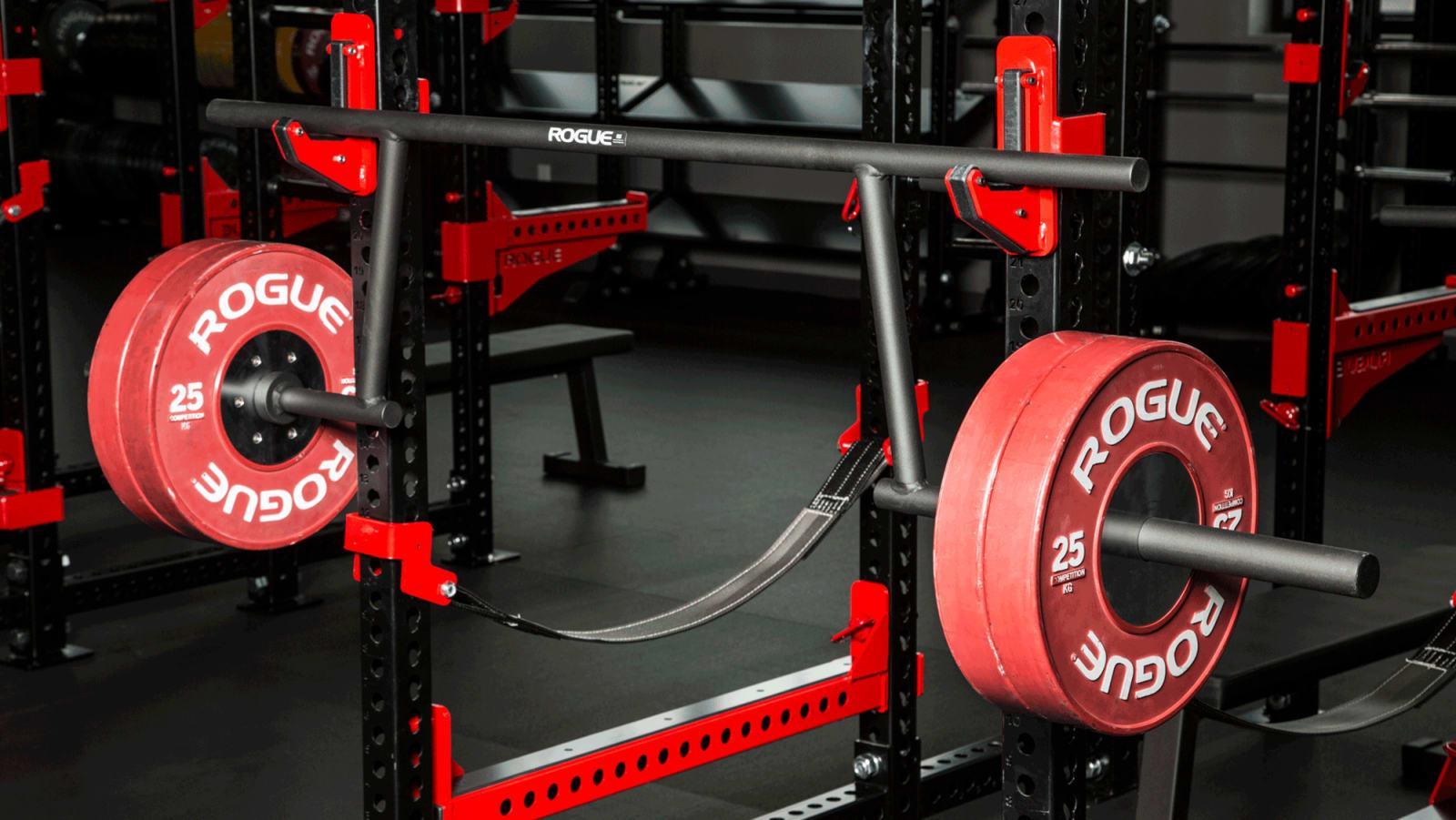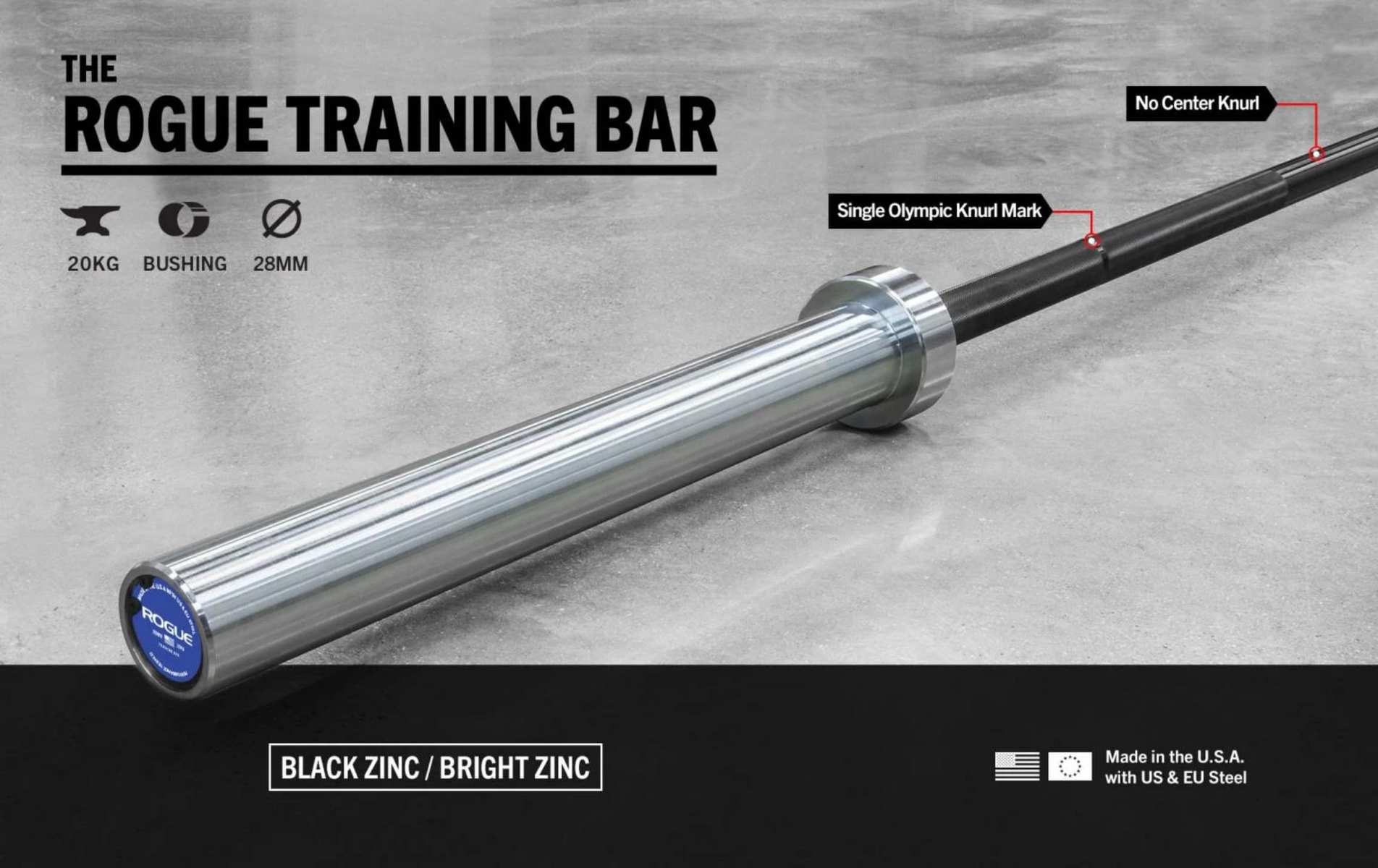Squatting has always been a staple in the fitness world.
Whether you’re an athlete aiming to compete at the highest levels, a home gym owner looking to maximize their training, or simply someone who wants to improve their overall fitness, the squat is an exercise you can’t ignore.
But did you know that there are different types of squat bars designed to cater to specific needs and preferences?
Today, we’ll delve deep into the various squat bars available on the market, helping you decide which one is best suited for your needs.
Let’s get started!
On This Page
- Traditional Squat Bar
- Power Bar
- Safety Squat Bar
- Cambered Squat Bar
- Transformer Bar
- Buffalo Bar
- Olympic Weightlifting Bar
- Bamboo/Earthquake Bar
- Are Squat Bars Better and Safer for Squatting?
- Frequently Asked Questions
- Can Different Types of Squat Bars Affect the Accuracy of Weight Measurements on a Barbell?
- Conclusion
Traditional Squat Bar
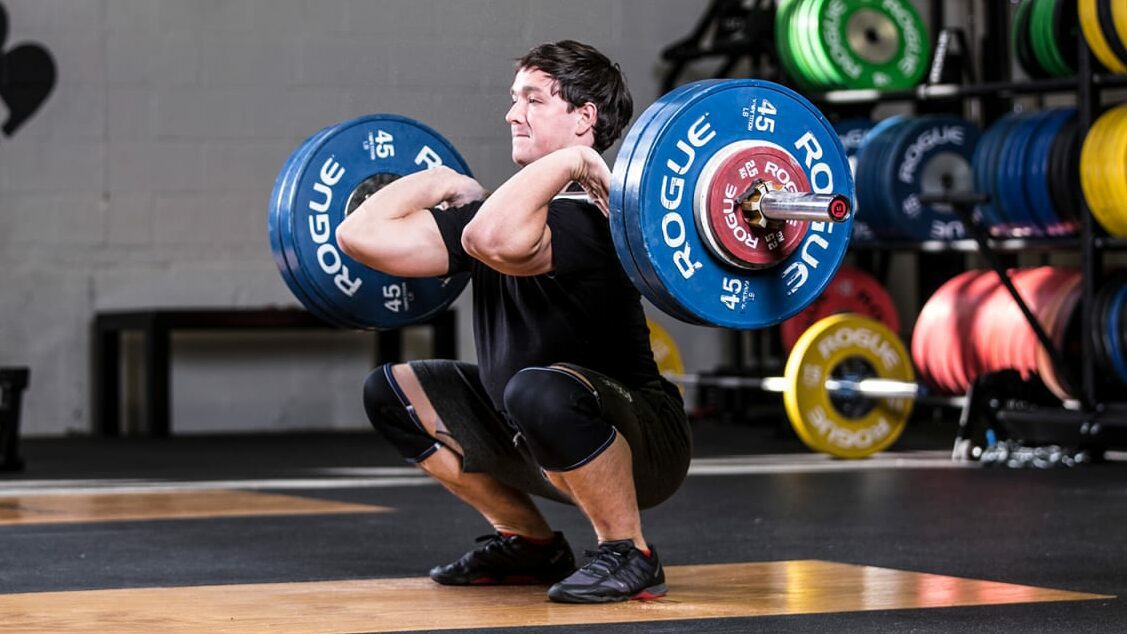
The Traditional Squat Bar, frequently referred to as the standard or Olympic barbell, stands as a timeless classic in the realm of weightlifting.
With its inception rooted in the early days of strength training, this barbell has witnessed the evolution of fitness regimes, techniques, and equipment, yet has firmly maintained its revered position.
Crafted with a blend of tradition and precision, its design speaks of minimalism but caters to a broad spectrum of exercises, transcending beyond just squats.
Beginners and seasoned professionals alike gravitate towards it, not just because of its ubiquity in gyms across the globe, but due to the familiarity and reliability it offers.
As the backbone of many weightlifting routines, the Olympic barbell symbolizes the essence of weightlifting – straightforward, effective, and timeless.
Pros
Cons
Who Should Use It?
The Olympic Bar serves as a versatile tool that caters to a wide audience.
Not only is it an excellent choice for beginners just dipping their toes into the world of weightlifting, but it also offers immense value to intermediate lifters refining their techniques.
Its design ensures that it’s user-friendly, making it less intimidating for newcomers.
Olympic barbells are also available at every legit gym which ensures familiarity and accessibility, making their workouts seamless.
Athletes transitioning between different exercise forms will also appreciate the bar’s adaptability.
Squat Bar Weight
At the heart of the Olympic barbell design is its balanced weight.
Typically weighing around 45lb, this bar strikes a balance between manageability and offering enough resistance for effective workouts.
However, it’s worth noting that the weight can fluctuate slightly, depending on the brand and manufacturer.
Some brands might offer slightly heavier or lighter versions, catering to specific needs or preferences.
Recommendation
For individuals at the onset of their weightlifting journey, or for those desiring a versatile tool that can seamlessly integrate into varied workout routines, a traditional barbell stands out as a dependable ally.
Its design and weight make it the cornerstone of many training programs. If we were to recommend the best barbell of this type, the Rogue Ohio Bar shines brightly.
Known for its robust construction, exceptional finish, and a blend of flexibility and stiffness, it’s revered by many in the lifting community.
However, always remember that while an Olympic barbell is a jack-of-all-trades, if you have specific concerns, such as shoulder discomfort, or require a bar with specialized features, it might be worth exploring other tailored options.
Power Bar
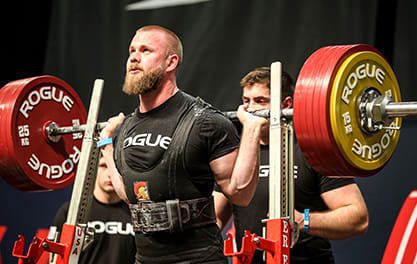
In the world of weightlifting, there’s a bar that stands out for those who push the limits of strength – the Power Bar.
Intrinsically linked with the discipline of powerlifting, this barbell is tailor-made for those whose primary focus is lifting heavy.
Crafted with precision and an emphasis on durability, it’s no surprise that the power bar is often the first choice for competitive lifters and dedicated strength trainers.
Pros
Cons
Who Should Use It?
The power bar finds its most passionate advocates among the ranks of competitive powerlifters and dedicated strength trainers.
If you’re someone who regularly pushes the boundaries of strength, this bar is tailored for you.
Its design nuances, from the aggressive knurling to its stiff construction, align perfectly with the demands of heavy lifting.
Additionally, for home gym owners keen on amplifying their strength training regimens, incorporating a power bar can be a transformative experience.
Power Bar Weight
While 45lbs is often cited as the standard weight for a power bar, variations do exist.
Depending on the brand, manufacturer, and specific design tweaks aimed at different segments of lifters, some power bars might tip the scales a bit more.
For instance, the Rogue 32mm Squat bar has a thicker shaft so it is around 25kg or 55 lbs.
Recommendation
For those committed to the powerlifting discipline, the right equipment can make all the difference.
In the realm of power bars, the
With its robust construction, exceptional grip, and a legacy trusted by many in the weightlifting community, it’s designed to meet the rigorous demands of heavy lifting.
Whether you’re an amateur or a seasoned professional, the
Following the esteemed
Tailored specifically for the squat, this bar boasts a thicker shaft, ensuring a more substantial and controlled grip.
The 32mm diameter is a testament to its commitment to enhancing the squatting experience, providing lifters with an added layer of confidence and stability.
Especially for those who prioritize squats in their training regimen or are looking for a bar that provides a firmer grasp, the Rogue 32mm Squat Bar emerges as a stellar choice.
It embodies Rogue’s commitment to quality, innovation, and specialized design, making it a must-consider for serious lifters.
Safety Squat Bar
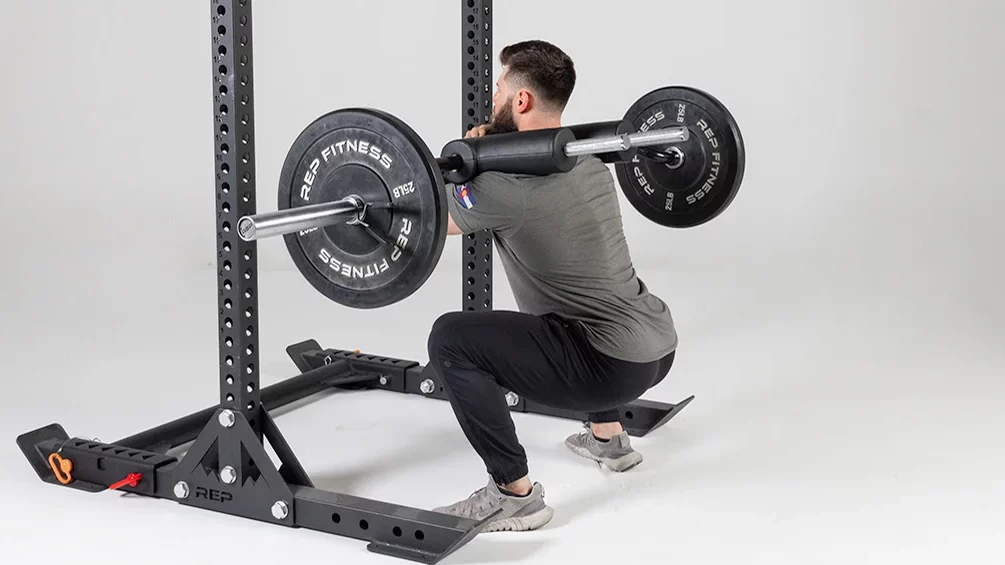
In the ever-evolving world of fitness equipment, the Safety Squat Bar (often referred to as the SSB) emerges as a beacon of innovation, prioritizing the lifter’s safety and comfort.
With its distinctive shape and cushioned support, this barbell challenges conventional squat mechanics, offering a more ergonomic approach that significantly reduces the strain commonly associated with squatting.
Pros
Cons
Who Should Use It?
The Safety Squat Bar is tailor-made for individuals who prioritize safety and comfort in their squatting routines.
Whether you’re navigating the recovery phase post-injury, dealing with mobility challenges, or a home gym owner aspiring for a more ergonomic lifting experience, the SSB stands out as a valuable asset.
Safety Squat Bar Weight
SSBs can weigh anywhere from 45-70 lbs overall. Brands, design enhancements, and additional features can influence the bar’s weight, with some models leaning on the heavier side.
For an in-depth look at the weight specifications of the Safety Squat Bar, click here.
Recommendation
When it comes to ensuring safety without compromising on the intensity of your squats, the Rep Fitness Safety Squat Bar emerges as my top pick.
Its ergonomic design, combined with the added padding, ensures that you can focus on your form and strength without the added strain on your shoulders and neck.
Especially for those recovering from injuries or with specific mobility concerns, this bar offers a solid combination of comfort and efficiency.
If you’re looking to elevate your squatting routine with an emphasis on safety, the Rep Fitness SSB is the way to go.
If you want more options, check out my best safety squat bar guide.
Cambered Squat Bar
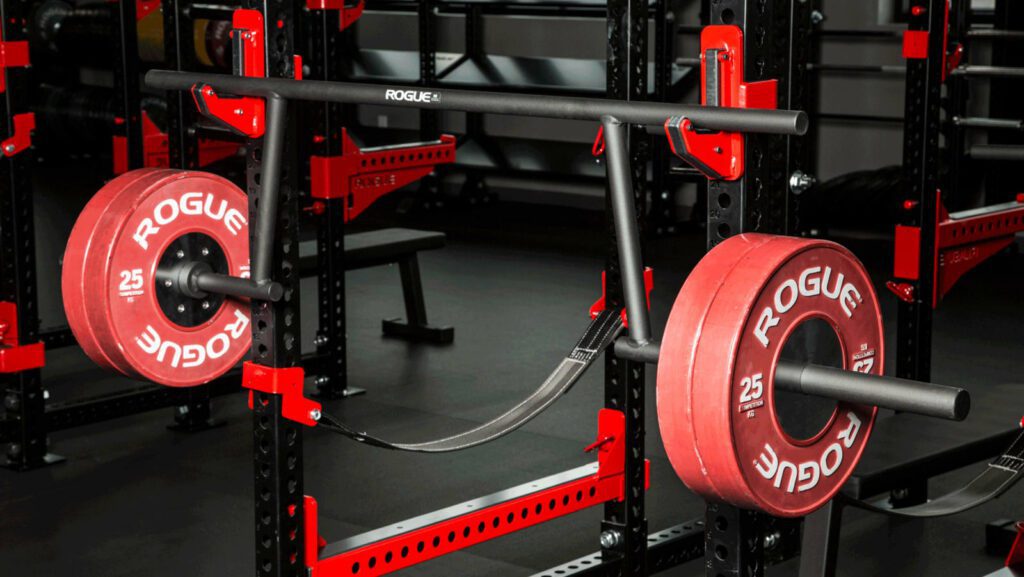
In the diverse world of barbells, the Cambered Squat Bar carves out its unique niche.
Characterized by its distinct curve or ‘camber’, this barbell diverges from the conventional straight design, presenting both novel opportunities and challenges for weightlifters.
Pros
Cons
Who Should Use It?
The Cambered Squat Bar is tailor-made for those who are no strangers to pushing boundaries.
If you’re aiming to intensify your squat depth, target specific muscle groups more effectively, or simply introduce an element of challenge to your routine, this bar is worth exploring.
Advanced lifters, in particular, might appreciate the stability challenge it presents, making every squat session a test of both strength and balance.
Cambered Squat Bar Weight
While the standard barbell weight is often around 45 lbs, the Cambered Squat Bar, with its unique design and added material, often weighs more.
Some models, depending on the manufacturer and design, can tip the scales at up to 85 lbs.
Recommendation
For those in pursuit of evolving their squat training and introducing challenging variations, the Cambered Squat Bar is a solid contender.
Its design, while intriguing, demands a period of acclimatization. Therefore, it’s crucial to ensure it aligns with your training goals before making an investment.
Among the plethora of options, my recommended pick in this category is the Rogue CB-1 Camber Bar.
Known for its robust construction and ergonomic design, it stands as a testament to Rogue’s commitment to quality and innovation.
Transformer Bar
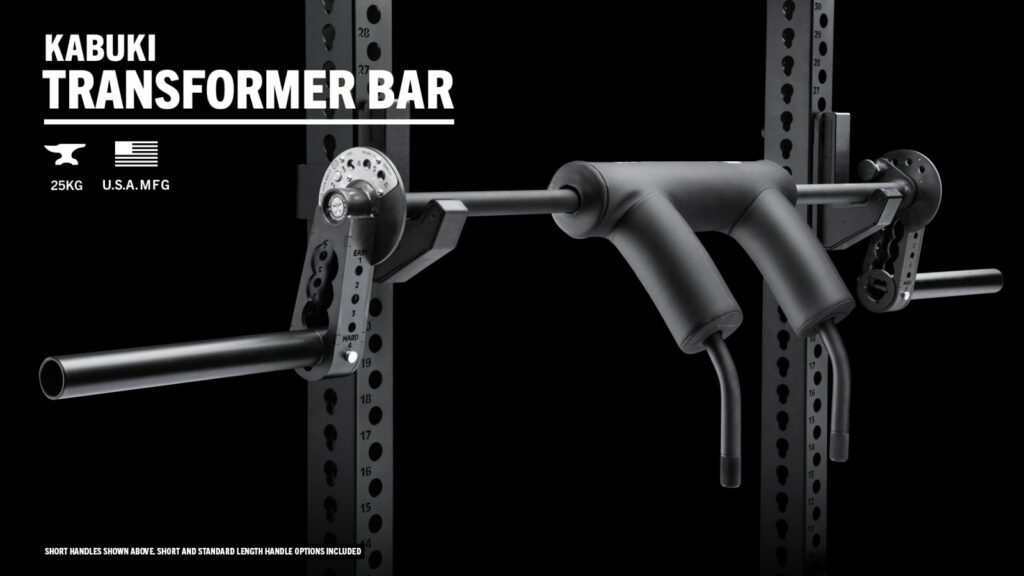
The Transformer Bar, a brainchild of modern fitness innovation, stands out as a revolutionary addition to the world of squat bars.
What sets it apart is its unparalleled adaptability, allowing lifters to tweak and adjust according to their specific needs, making it a unique offering in the barbell market.
With the Kabuki Strength Transformer Bar leading the way, there’s no competition when it comes to its distinctive features and benefits.
Pros
Cons
Who Should Use It?
The Transformer Bar is the epitome of customization in weightlifting.
It’s ideal for advanced lifters, home gym aficionados, and even rehabilitation professionals who understand the nuances of squat mechanics.
Its design caters to those aiming to refine their squatting technique, recover from injuries, or those seeking a more ergonomic approach to their lifting routine.
Transformer Bar Weight
The Transformer Bar is the first of its kind but still weighs as much as you would expect a typical SSB to weigh, around 25kg or 55 lbs.
Recommendation
For those in pursuit of precision, adaptability, and ergonomic excellence, the Transformer Bar is unrivaled.
In particular, the Kabuki Strength Transformer Bar stands out as the pinnacle of this category.
Its unique design and adjustability make it an unmatched tool for both advanced lifters and rehabilitation professionals.
While it offers a myriad of settings that seasoned lifters will appreciate, newcomers should approach with an open mind, ready to explore its vast capabilities.
For an insightful comparison between the Marrs Bar and the Transformer Bar, click here.
Buffalo Bar
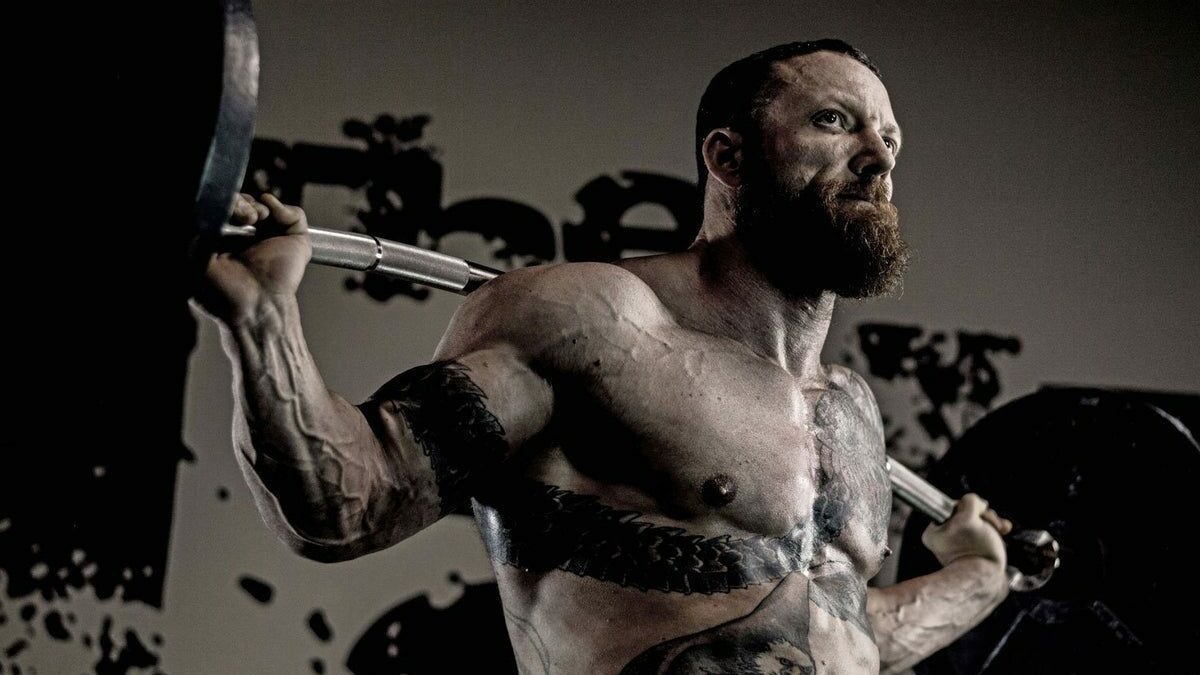
The Buffalo Bar, affectionately termed the “bow bar” due to its distinctive curved design, presents a refreshing divergence from traditional straight barbells.
This innovative curvature not only alters the aesthetics but redefines the very mechanics of squatting.
By positioning itself lower on the lifter’s back, the bar introduces a nuanced squatting experience, merging comfort with performance.
Pros
Cons
Who Should Use It?
The Buffalo Bar emerges as a prime choice for individuals who’ve grappled with shoulder discomfort using standard bars.
Whether you’re recovering from an injury, have inherent shoulder challenges, or are simply looking to infuse diversity into your squat regimen, this bar promises a unique and effective experience.
Buffalo Bar Weight
The weight of Buffalo Bars typically ranges between 45lb to 60lb.
While many standard versions hover around the familiar 45lb benchmark, due to the specialized nature of this equipment, there’s a broader spectrum of weight variations.
Factors such as brand, construction quality, and specific design enhancements can influence a Buffalo Bar’s weight.
Recommendation
Navigating the world of squatting can be challenging, especially if physical discomfort becomes a recurring theme.
The Buffalo Bar offers a potential solution, with its design centered around lifter comfort.
For those eager to explore a different facet of squatting or simply seeking a more ergonomic alternative, it’s a worthy consideration.
However, if you’re on the lookout for the crème de la crème of Buffalo Bars, the Duffalo Bar stands out.
Renowned for its exceptional build quality and ergonomic design, it’s my recommended choice for those serious about elevating their squat game.
Olympic Weightlifting Bar
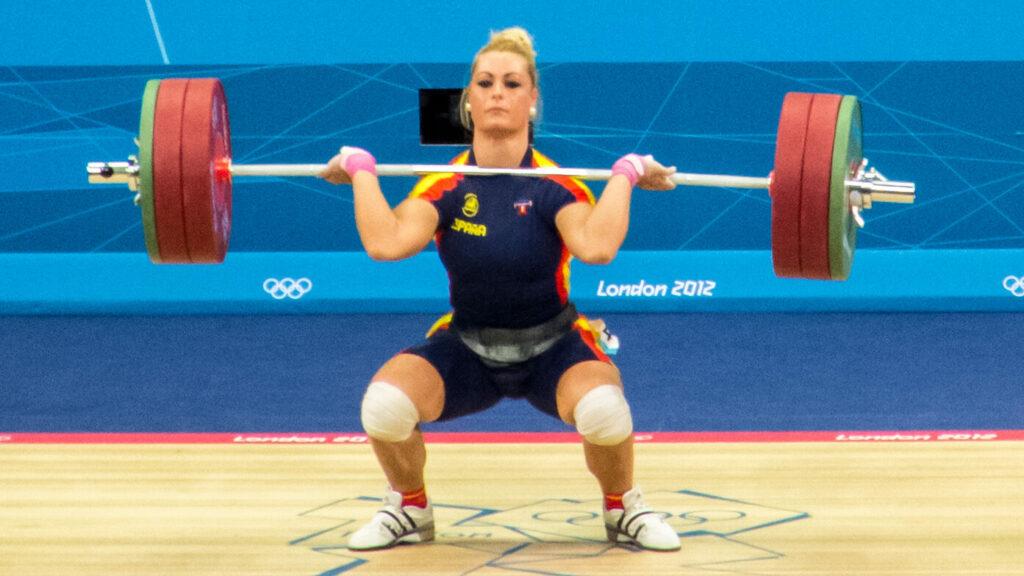
When we talk about the Olympic Weightlifting Bar, we often associate it with the fast and precise movements of Olympic lifts.
However, its potential as a squat bar is gaining recognition.
Offering a different feel and mechanics compared to the traditional squat bars, the Olympic Weightlifting Bar brings a touch of international weightlifting flair to your squat routine.
Pros
Cons
Who Should Use It?
Those looking to infuse their squat sessions with the essence of Olympic weightlifting will find this bar a refreshing change.
It’s particularly suitable for athletes who alternate between Olympic lifts and squats, providing a seamless transition between the two.
Its unique features also make it a fascinating choice for those wanting to experiment with their squat mechanics.
Olympic Weightlifting Bar Weight
- Men’s bar – Typically weighing around 44 lbs (20kg) and measuring about 7.2 feet, it provides ample space for loading plates during squats.
- Women’s bar – At approximately 33 lb (15kg), it offers a slightly more compact design, ensuring comfort and control during squats.
Recommendation
For those intrigued by the idea of integrating Olympic weightlifting dynamics into their squat routine, the Olympic Weightlifting Bar offers an exciting prospect.
It provides a blend of control, flex, and a unique feel that can rejuvenate your squat sessions.
My top pick for men venturing into this realm is the Rogue 28mm Training Bar; its balance of strength and flexibility is commendable.
For women, the Bells Of Steel Women’s Barbell 2.0 stands as the best choice, designed with the perfect blend of durability and precision.
For a comprehensive breakdown of barbell dimensions and specifications, click here.
Bamboo/Earthquake Bar
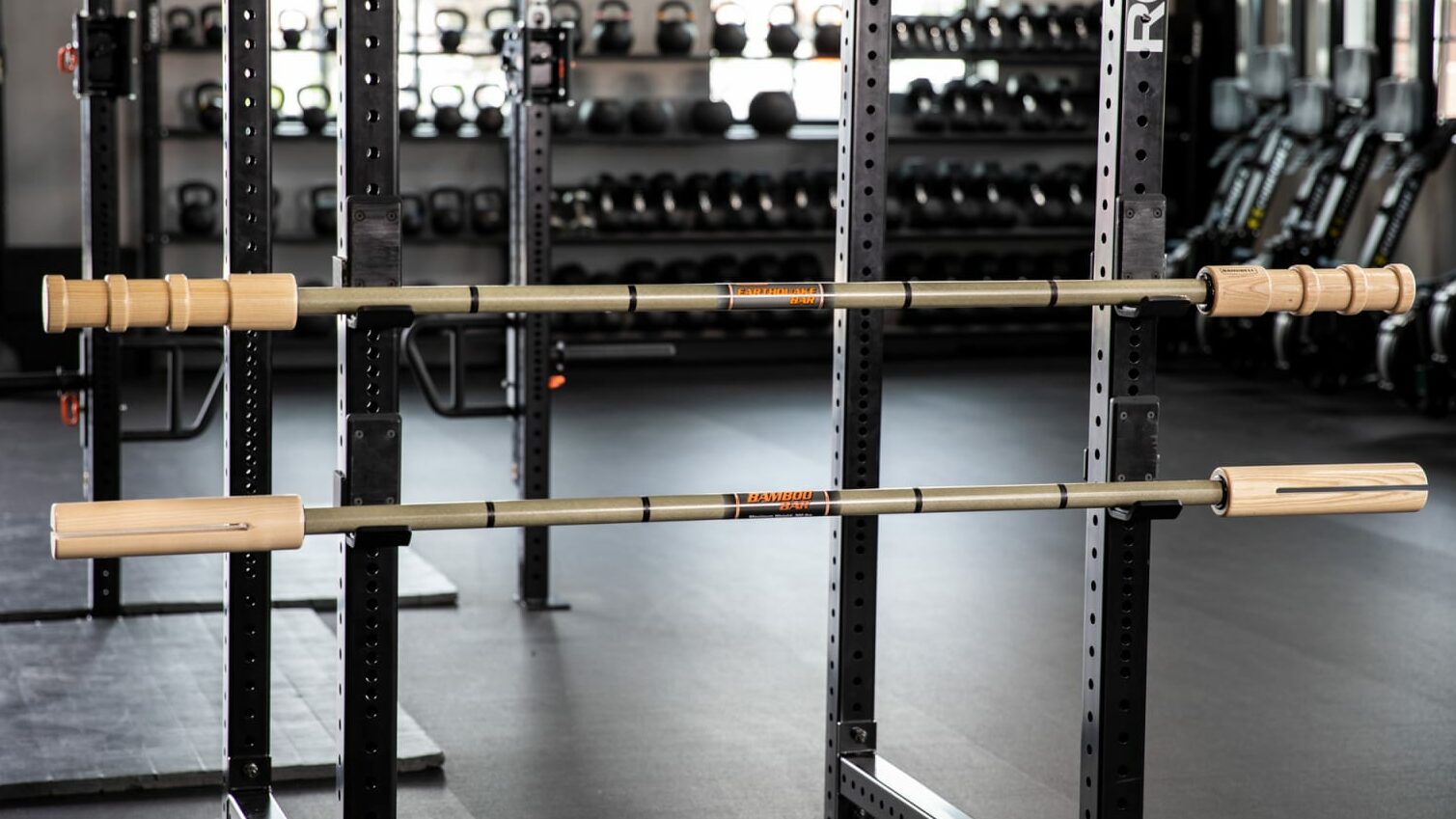
Delving into the innovative realm of squat bars, the Bamboo or Earthquake Bar emerges as a distinctive choice.
Rather than being made from conventional steel, this bar utilizes bamboo or other flexible materials, introducing a novel dimension of instability to weightlifting.
This intentional wobble not only redefines the squatting experience but also brings forth a slew of benefits, especially for those on the path of rehabilitation or stability enhancement.
Pros
Cons
Who Should Use It?
The Bamboo/Earthquake Bar is tailor-made for a specific audience.
Whether you’re in the midst of a recovery phase post-injury, prioritizing stability training, or are an adventurous soul eager to sprinkle some challenge into your routine, this bar beckons.
Bamboo/Earthquake Bar Weight
Compared to their traditional counterparts, Bamboo/Earthquake Bars tend to be on the lighter side at 6 lbs.
However, their weight can oscillate based on the brand, design specifics, and the materials employed.
Recommendation
For those on the hunt for something distinct that promises a challenge and offers rehabilitation benefits, the Bamboo/Earthquake Bar is a commendable choice.
My personal recommendation in this category is the BandBell Bamboo Bar. Its design and functionality resonate with the core principles of stability training and rehabilitation.
However, if your training regimen is anchored around traditional strength training, you might want to explore bars crafted for those specific needs.
Are Squat Bars Better and Safer for Squatting?
The world of fitness has seen a plethora of equipment designed to enhance workouts and ensure safety.
Among these, various types of squat bars have emerged, each with its unique design and purpose.
But the question remains: Are they better and safer for squatting? The answer largely depends on the individual’s needs, goals, and physical condition.
For instance, with its ergonomic design, the SSB is particularly beneficial for those with shoulder or neck issues.
While the camber in the Cambered Squat Bar can help reduce spinal compression, making squats more comfortable for some.
On the flip side, bars like the Bamboo/Earthquake Bar, while excellent for stability training, might not be suitable for those looking to lift heavy weights.
It’s essential to understand that while these bars are designed to enhance the squatting experience, proper technique is crucial.
Regardless of the bar used, incorrect form can lead to injury. Thus, it’s always recommended to work with a coach or expert, especially when trying out a new type of bar.
In conclusion, while different types of squat bars can offer specific advantages, safety ultimately boils down to the correct technique and choosing the right bar for one’s individual needs.
Check out my guide on all the different types of barbells if you want to learn more about barbells in general!
Frequently Asked Questions
Can Different Types of Squat Bars Affect the Accuracy of Weight Measurements on a Barbell?
Different types of squat bars can indeed affect the accuracy of measuring weight on a barbell. Olympic bars, for instance, offer standardized weight measurements and distribute the load evenly. In contrast, specialty bars like safety squat bars or cambered bars might alter weight measurements due to their unique designs. Precise weight measurements are crucial for tracking progress and maintaining consistency in weightlifting.
Conclusion
The world of squat bars is vast and varied, catering to the diverse needs of lifters worldwide.
From the traditional squat bar suitable for beginners to specialized bars like the Transformer Bar for advanced lifters, there’s something for everyone.
The key is to identify one’s needs, be it rehabilitation, heavy lifting, or stability training, and choose a bar that aligns with those goals.
And remember, regardless of the bar you choose, proper technique is paramount.
So, which squat bar are you keen on trying next? Let me know in the comment section below, right now!
Until next time,
-Dante
